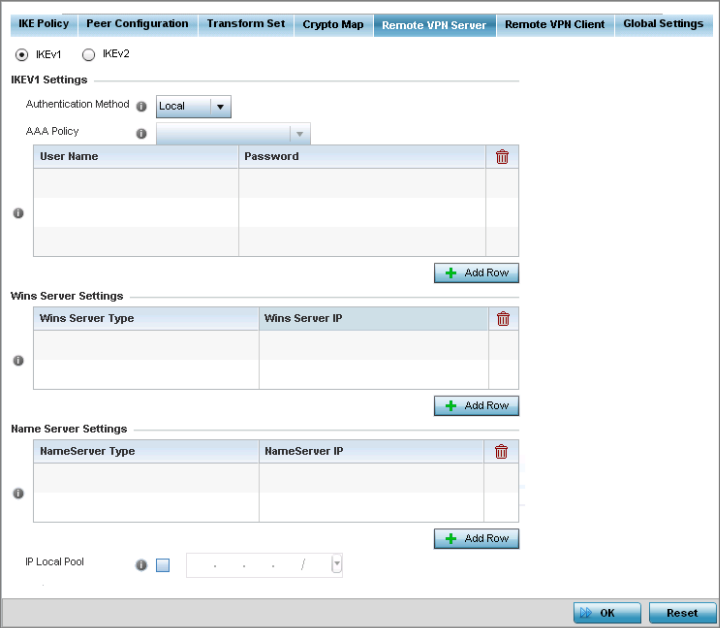To configure the remote VPN server settings:
Use this screen to define the server resources used to secure (authenticate) a remote VPN connection with a target peer.

IKEv2 provides improvements from the original IKEv1 design (improved cryptographic mechanisms, NAT and firewall traversal, attack resistance etc.) and is recommended in most deployments. The appearance of the screen differs depending on the selected IKE mode.
|
Authentication Method |
Use the drop-down menu to specify the authentication method used to validate the credentials of the remote VPN client. Options include Local (on board RADIUS resource if supported) and RADIUS (designated external RADIUS resource). If selecting Local, select the + Add Row button and specify a User Name and Password for authenticating remote VPN client connections with the local RADIUS resource. If selecting RADIUS, specify an AAA policy providing RADIUS server details. |
|
AAA Policy |
Select the AAA policy used with the remote VPN client. AAA policies define RADIUS authentication and accounting parameters. The access point can optionally use AAA server resources (when using RADIUS as the authentication method) to provide user database information and user authentication data. |
|
DHCP Server Type |
Specify whether the Dynamic Host Configuration Protocol (DHCP) server is specified as an IP address, Hostname (FQDN) or None (a different classification will be defined). DHCP allows hosts on an IP network to request and be assigned IP addresses as well as discover information about the network where they reside. |
|
DHCP Server |
Depending on the DHCP server type selected, enter either the numerical IP address, hostname or other (if None is selected as the server type). |
|
IP Local Pool |
Select this option to define an IP address and mask for a virtual IP pool used to IP addresses to remote VPN clients. |
|
Relay Agent IP Address |
Select this option to define DHCP relay agent IP address. |
Selecting Reset reverts the screen to its last saved configuration.